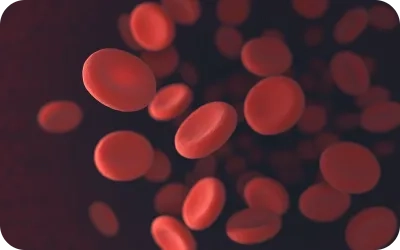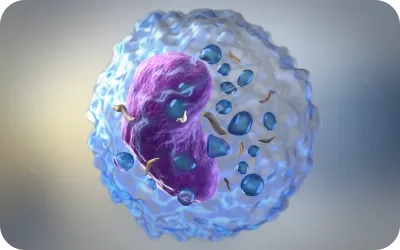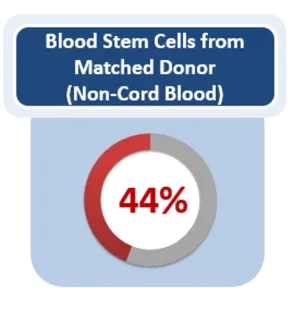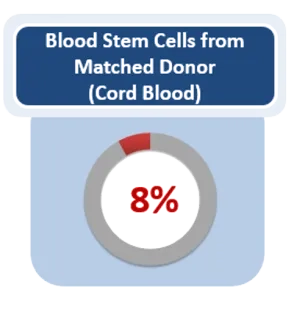
FAQ on Cord Blood Banking
FAQ for Expectant Parents
With over 40,0001 cord blood transplants to date worldwide, cord blood is fast becoming a viable alternative for stem cell transplants in comparison with traditional bone marrow transplants. Plenty of promising research and active clinical trials are currently ongoing in the arena of stem cell transplants.
The FAQs below present most of the commonly asked questions have about cord blood banking and other related questions. Find out more about cord blood banking and how Cordlife can help play an important part to ensure holistic protection and assurance when it comes to protecting your child's health.
To view a topic, click on it and find the answer.
What is cord blood?
Cord blood is blood that remains in the umbilical cord following the birth of a baby and after the umbilical cord is cut. During pregnancy, the umbilical cord functions as a lifeline between mother and child. After a baby’s delivery, the cord blood present in the umbilical cord could offer hope for the child as well as members of the family. Cord blood contains a rich source of lifesaving stem cells called Haematopoietic Stem Cells (HSCs).
What are cord blood stem cells?
Cord blood stem cells are also known as Haematopoietic Stem Cells (HSCs), which are responsible for replenishing blood and regenerating the immune system. These stem cells can be found within the umbilical cord following the birth of a baby and have the unique ability to differentiate into various cell types found in blood as depicted in the diagram below:
- Red blood cells - which transport oxygen
- White blood cells - which produce antibodies and fight bacteria
- Platelets - which assist in blood clotting

Carry oxygen to all cells in the bodyy

Fight infections

Helps blood to clot in the event of an injury
Why should I save my baby’s cord blood stem cells?
There are several advantages of storing your baby’s cord blood stem cells, such as:
- A guaranteed match for autologous transplants (where the donor and recipient are the same individual)
- Having a readily available supply of stored Haematopoietic Stem Cells (HSCs) as opposed to conducting a national or international search, which can be costly and time-consuming during a time-critical situation
- Lower risk of Graft vs. Host Disease (GvHD) for autologous transplants, a situation where the transplanted tissue attacks the patient’s own tissue
- Non-invasive collection procedure which is pain-free and risk-free to both mother and child
- Cord blood stem cells are younger, have a higher rate of engraftment and are more tolerant to tissue mismatches, compared to other sources of stem cells, e.g. bone marrow
Lower risk of Graft vs Host Disease (GvHD) after a stem cell transplant


What can cord blood stem cells do?
Cord blood stem cells can:
- Replace and regenerate damaged or diseased bone marrow.
- Treat blood related cancers, solid tumours and immunodeficiency disorders.
- Correct genetic defects (sibling/allogeneic transplantation).
- Potentially be used for cellular therapy and regenerative medicine.erative medicine.
How does a cord blood stem cell transplant work?
The purpose of a stem cell treatment is to reconstitute a patient’s blood and immune system.
For example, in the case of a cancer-related transplant, chemotherapy and radiotherapy will have to take place before the infusion of cord blood stem cells. The cord blood stem cells will be infused intravenously into the patient’s blood stream, where they will migrate to the patient’s bone marrow. Haematopoietic Stem Cells (HSCs), which can be found in umbilical cord blood will differentiate itself into three blood cell types – red blood cells, white blood cells and platelets, a process which initiates the regeneration of the patient’s blood and immune system.
What are some of the diseases that can be treated using cord blood stem cells?
Cord blood stem cells are currently being used as a standard form of treatment for over 80 diseases such as leukaemia, lymphoma, thalassemia and neuroblastoma, just to name a few. For the full list of treatable diseases, click here.
How can the storage of cord blood stem cells benefit my family?
Apart from being a perfect match for your child, cord blood can also be used by family members. Unlike bone marrow which requires a perfect match between donor and patient, the probability of finding a match among family members using cord blood stem cells is higher. In addition, the chances of finding a suitable match within the family increases with the storage of every additional child’s cord blood2.
2 Parent’s Guide to Cord Blood FAQ. Parent’s Guide to Cord Blood Foundation website. https://parentsguidecordblood.org/en/faqs. Accessed November 11, 2019.
How is my baby's umbilical cord blood collected by my OBGYN?
Immediately after the delivery of your baby, the cord is clamped and your baby separated from the cord and moved from the birthing area. The doctor then collects the umbilical cord blood by inserting a needle into the cord vein, and draining the blood into a blood bag.
This is because Cordlife conducts two different tests for Hepatitis B virus (HBV) on maternal blood, namely:
This procedure is painless and risk-free to both you and your baby. It takes about 3 minutes and does not alter the birthing process in any way. It can be done with either a vaginal or caesarean delivery.
Please note that the final decision of whether the cord blood collection should take place will always reside with your caregiver whose first priority is the safety of you and your baby.
How is my baby's cord blood stored?
Your baby’s umbilical cord blood is stored within an U.S. FDA approved cryogenic storage pouch that consists of 2 dual compartments (20% and 80%) and is in compliance with AABB and FACT-Netcord standards. The dual compartments allows for the possibility of stem cell expansion programmes in the future. This means that 80% of the stem cells can be withdrawn for immediate use/treatment while the balance 20% is stored for future expansion.
Cordlife’s cryogenic storage pouch is made of a special material designed specifically to withstand temperatures of -150°C: the optimal cryogenic temperature for long-term stem cell cryopreservation.
At Cordlife, we use MVE Anti-contamination Vapour-phase Liquid Nitrogen Storage Systems for the storage of our clients’ umbilical cord stem cells. Vapour-phase storage is preferred over liquid-phase storage4 as it eliminates the chance of cross contamination between cord blood units as compared with those stored in liquid nitrogen.
The MVE Anti-contamination Vapour-phase Liquid Nitrogen Storage systems are equipped with a high-grade monitoring system that scans for any out-of-range conditions to ensure that the temperature is maintained within the optimum range at all times. In addition, the system also operates perfectly even without electrical supply, making it 100% reliable and failsafe with no chance of robotic malfunction. Unlike other storage systems in the market, our tanks have never been recalled by the U.S. FDA or the manufacturer.
In the remote chance of an unexpected emergency, our laboratory is also equipped with an uninterrupted power supply.
In the unlikely event of an unexpected emergency, our laboratory also has an uninterrupted power supply.
Reference
4 Pitt KE, Campbell L, Skubitz APN et al. Best practices for repositories I: Collection, storage, and retrieval of human biological materials for research.
Cell Preservation Technology . 2005; 3(1):5-48
How long can my baby's umbilical cord blood stem cells be stored?
Research has shown that cord blood which has been processed according to international standards and stored at cryogenic temperatures of between -135°C to -190°C can be stored indefinitely and still remain viable5.
5 Cells for life website. https://cellsforlife.com/how-long-can-cord-blood-stem-cells-be-stored/. Accessed November 25, 2019.
Can I store my baby's cord blood if my blood sample is tested positive for Hepatitis B?
You may still continue to store your baby's cord blood (with additional consent given to Cordlife), or elect to discard the umbilical cord blood unit.
This is because Cordlife conducts two different tests for Hepatitis B virus (HBV) on maternal blood, namely:
- Hepatitis B Surface Antigen (HBsAg)
- Hepatitis B Core Antibody (Anti-HBc (Total))
Usually, the attending transplant physician will make the decision whether to use an umbilical cord blood unit where the maternal blood was tested positive for Hepatitis B for transplant, based on various factors particular to the patient, the cord blood unit intended for use, and the availability of other HLA-matched donor.
How do I enrol?
Contact us at our Hotline (+91) 9830166200 or 1800 121 6200 you can email us info@Cordlifeindia.com to make an appointment with our Cord Blood Banking Consultant.
*If you are due within the next 4 - 6 weeks, we strongly recommend you to contact us immediately for enrolment because this will ensure all necessary steps are completed before your baby's arrival.
What happens after the full 25/21-years of storage?
The ownership of the cord blood will be transferred over to your child once he/she reaches the legal adult age of 18 years and upon the renewal of the agreement. Your child will be prompted to continue storage thereafter at the prevailing fees
What happens if Cordlife ceases operations?
The continuation of storage of your child's umbilical cord blood stem cells is of utmost importance to us. In the unlikely event that Cordlife ceases its operations, Cordlife may assign its rights under the Agreement to another provider of cord blood banking storage facilities as long as that provider meets the necessary standards at the relevant time.

FAQ on Cord Blood Banking
FAQ for Expectant Parents
With over 40,0001 cord blood transplants to date worldwide, cord blood is fast becoming a viable alternative for stem cell transplants in comparison with traditional bone marrow transplants. Plenty of promising research and active clinical trials are currently ongoing in the arena of stem cell transplants.
The FAQs below present most of the commonly asked questions have about cord blood banking and other related questions. Find out more about cord blood banking and how Cordlife can help play an important part to ensure holistic protection and assurance when it comes to protecting your child's health.
To view a topic, click on it and find the answer.
What is cord blood?
Cord blood is blood that remains in the umbilical cord following the birth of a baby and after the umbilical cord is cut. During pregnancy, the umbilical cord functions as a lifeline between mother and child. After a baby’s delivery, the cord blood present in the umbilical cord could offer hope for the child as well as members of the family. Cord blood contains a rich source of lifesaving stem cells called Haematopoietic Stem Cells (HSCs).
What are cord blood stem cells?
Cord blood stem cells are also known as Haematopoietic Stem Cells (HSCs), which are responsible for replenishing blood and regenerating the immune system. These stem cells can be found within the umbilical cord following the birth of a baby and have the unique ability to differentiate into various cell types found in blood as depicted in the diagram below:
- Red blood cells - which transport oxygen
- White blood cells - which produce antibodies and fight bacteria
- Platelets - which assist in blood clotting

Carry oxygen to all cells in the bodyy

Fight infections

Helps blood to clot in the event of an injury
Why should I save my baby’s cord blood stem cells?
There are several advantages of storing your baby’s cord blood stem cells, such as:
- A guaranteed match for autologous transplants (where the donor and recipient are the same individual)
- Having a readily available supply of stored Haematopoietic Stem Cells (HSCs) as opposed to conducting a national or international search, which can be costly and time-consuming during a time-critical situation
- Lower risk of Graft vs. Host Disease (GvHD) for autologous transplants, a situation where the transplanted tissue attacks the patient’s own tissue
- Non-invasive collection procedure which is pain-free and risk-free to both mother and child
- Cord blood stem cells are younger, have a higher rate of engraftment and are more tolerant to tissue mismatches, compared to other sources of stem cells, e.g. bone marrow
Lower risk of Graft vs Host Disease (GvHD) after a stem cell transplant


What can cord blood stem cells do?
Cord blood stem cells can:
- Replace and regenerate damaged or diseased bone marrow.
- Treat blood related cancers, solid tumours and immunodeficiency disorders.
- Correct genetic defects (sibling/allogeneic transplantation).
- Potentially be used for cellular therapy and regenerative medicine.erative medicine.
How does a cord blood stem cell transplant work?
The purpose of a stem cell treatment is to reconstitute a patient’s blood and immune system.
For example, in the case of a cancer-related transplant, chemotherapy and radiotherapy will have to take place before the infusion of cord blood stem cells. The cord blood stem cells will be infused intravenously into the patient’s blood stream, where they will migrate to the patient’s bone marrow. Haematopoietic Stem Cells (HSCs), which can be found in umbilical cord blood will differentiate itself into three blood cell types – red blood cells, white blood cells and platelets, a process which initiates the regeneration of the patient’s blood and immune system.
What are some of the diseases that can be treated using cord blood stem cells?
Cord blood stem cells are currently being used as a standard form of treatment for over 80 diseases such as leukaemia, lymphoma, thalassemia and neuroblastoma, just to name a few. For the full list of treatable diseases, click here.
How can the storage of cord blood stem cells benefit my family?
Apart from being a perfect match for your child, cord blood can also be used by family members. Unlike bone marrow which requires a perfect match between donor and patient, the probability of finding a match among family members using cord blood stem cells is higher. In addition, the chances of finding a suitable match within the family increases with the storage of every additional child’s cord blood2.
2 Parent’s Guide to Cord Blood FAQ. Parent’s Guide to Cord Blood Foundation website. https://parentsguidecordblood.org/en/faqs. Accessed November 11, 2019.
How is my baby's umbilical cord blood collected by my OBGYN?
Immediately after the delivery of your baby, the cord is clamped and your baby separated from the cord and moved from the birthing area. The doctor then collects the umbilical cord blood by inserting a needle into the cord vein, and draining the blood into a blood bag.
This is because Cordlife conducts two different tests for Hepatitis B virus (HBV) on maternal blood, namely:
This procedure is painless and risk-free to both you and your baby. It takes about 3 minutes and does not alter the birthing process in any way. It can be done with either a vaginal or caesarean delivery.
Please note that the final decision of whether the cord blood collection should take place will always reside with your caregiver whose first priority is the safety of you and your baby.
How is my baby's cord blood stored?
Your baby’s umbilical cord blood is stored within an U.S. FDA approved cryogenic storage pouch that consists of 2 dual compartments (20% and 80%) and is in compliance with AABB and FACT-Netcord standards. The dual compartments allows for the possibility of stem cell expansion programmes in the future. This means that 80% of the stem cells can be withdrawn for immediate use/treatment while the balance 20% is stored for future expansion.
Cordlife’s cryogenic storage pouch is made of a special material designed specifically to withstand temperatures of -150°C: the optimal cryogenic temperature for long-term stem cell cryopreservation.
At Cordlife, we use MVE Anti-contamination Vapour-phase Liquid Nitrogen Storage Systems for the storage of our clients’ umbilical cord stem cells. Vapour-phase storage is preferred over liquid-phase storage4 as it eliminates the chance of cross contamination between cord blood units as compared with those stored in liquid nitrogen.
The MVE Anti-contamination Vapour-phase Liquid Nitrogen Storage systems are equipped with a high-grade monitoring system that scans for any out-of-range conditions to ensure that the temperature is maintained within the optimum range at all times. In addition, the system also operates perfectly even without electrical supply, making it 100% reliable and failsafe with no chance of robotic malfunction. Unlike other storage systems in the market, our tanks have never been recalled by the U.S. FDA or the manufacturer.
In the remote chance of an unexpected emergency, our laboratory is also equipped with an uninterrupted power supply.
In the unlikely event of an unexpected emergency, our laboratory also has an uninterrupted power supply.
Reference
4 Pitt KE, Campbell L, Skubitz APN et al. Best practices for repositories I: Collection, storage, and retrieval of human biological materials for research.
Cell Preservation Technology . 2005; 3(1):5-48
How long can my baby's umbilical cord blood stem cells be stored?
Research has shown that cord blood which has been processed according to international standards and stored at cryogenic temperatures of between -135°C to -190°C can be stored indefinitely and still remain viable5.
5 Cells for life website. https://cellsforlife.com/how-long-can-cord-blood-stem-cells-be-stored/. Accessed November 25, 2019.
Can I store my baby's cord blood if my blood sample is tested positive for Hepatitis B?
You may still continue to store your baby's cord blood (with additional consent given to Cordlife), or elect to discard the umbilical cord blood unit.
This is because Cordlife conducts two different tests for Hepatitis B virus (HBV) on maternal blood, namely:
- Hepatitis B Surface Antigen (HBsAg)
- Hepatitis B Core Antibody (Anti-HBc (Total))
Usually, the attending transplant physician will make the decision whether to use an umbilical cord blood unit where the maternal blood was tested positive for Hepatitis B for transplant, based on various factors particular to the patient, the cord blood unit intended for use, and the availability of other HLA-matched donor.
How do I enrol?
Contact us at our Hotline (+91) 9830166200 or 1800 121 6200 you can email us info@Cordlifeindia.com to make an appointment with our Cord Blood Banking Consultant.
*If you are due within the next 4 - 6 weeks, we strongly recommend you to contact us immediately for enrolment because this will ensure all necessary steps are completed before your baby's arrival.
What happens after the full 25/21-years of storage?
The ownership of the cord blood will be transferred over to your child once he/she reaches the legal adult age of 18 years and upon the renewal of the agreement. Your child will be prompted to continue storage thereafter at the prevailing fees
What happens if Cordlife ceases operations?
The continuation of storage of your child's umbilical cord blood stem cells is of utmost importance to us. In the unlikely event that Cordlife ceases its operations, Cordlife may assign its rights under the Agreement to another provider of cord blood banking storage facilities as long as that provider meets the necessary standards at the relevant time.
